This article is part of TPM Cafe, TPM’s home for opinion and news analysis.
While federal investigations into the Jan. 6 riot at the U.S. Capitol will no doubt continue for months, next week’s Senate trial in the second impeachment of Donald Trump brings into focus the question of who is accountable for the recent assault on American democracy. While the vote last week on the constitutionality of the trial signaled how Republican senators may vote on conviction, one thing is clear: Trump did not act alone in inciting the insurrection. Without a network of organizations, allies, politicians and devoted conspiracy theorists willing to encourage and spread his lies about voter fraud, Trump’s protest would have been silenced by his campaign’s losses in court following his defeat at the ballot box. Trump’s mendacity was possible because millions of people were led to believe they could trust his word as a matter of faith.
Reports from the Religion News Service to The New Yorker have noted the presence of Christian nationalist symbols, songs and leaders at the Capitol siege on Jan. 6 — from Paula White’s opening prayer at the rally outside the White House, to a “Jesus 2020” banner unfurled on the West steps of the Capitol, to the victory prayer offered by insurrectionists who occupied the Senate chamber after members had been evacuated to a secure location. Indeed, the presence of Christians and Christian symbolism at the Capitol riot was so pronounced that several pro-Trump pastors felt compelled to make public statements condemning the violence in the days that followed.
But the crowd at the Capitol on Jan. 6 did not just happen to be overwhelmingly white and Christian in the way you’d expect the crowd at a NASCAR race or a Garth Brooks concert to be. As Sarah Posner, an investigative journalist who has followed Christian nationalist organizations for more than a decade, observed, “a reconstruction of the weeks leading up to Jan. 6 shows how a Christian-right group formed to ‘stop the steal’ worked to foment a bellicose Christian narrative in defense of Trump’s coup attempt and justify a holy war against an illegitimate state.” Without the religious zeal and moral claims that Christian nationalism brought to the insurrection, it’s possible the attack might not have happened. The riot, it turns out, wasn’t so much a political protest as it was a religious crusade in the eyes of many members of the pro-Trump mob.
But as scholars of religious extremism have noted in different contexts around the world, crusades are not born overnight, nor are they a response to any single event. Crusades happen when the structures and symbols of a religious tradition are manipulated to inspire devotion to the political power of one group over another.
In her book “The Power Worshipers,” which chronicles the coordinated efforts of religious right organizations in recent decades, Katherine Stewart has written that the “leaders of the movement have quite consciously reframed the Christian religion itself to suit their political objectives and then promoted this new reactionary religion as widely as possible, thus turning citizens into congregants and congregants into voters.” While these organizations have often been described as the instigators of America’s culture wars, Stewart is clear in her account that their aim has always been power. When Donald Trump became a willing promoter of their “redemption” narrative — think, “Make America Great Again” — religious right groups quickly lined up to convince their followers that Trump was God’s instrument.
The “Jericho Marches” that preceded the Jan. 6 “Stop the Steal” help illustrate the ties between the organizations of Christian nationalism and anti-democratic extremism. After telling their followers for years that God was using Donald Trump to restore their values, trusted radio personalities and preachers invited them to come to D.C. and perform the biblical story by marching around the city, as God’s people marched around Jericho. The group not only marched around key government buildings (like the Supreme Court and the Capitol), they also carried and blew ram’s horns, or shofars, as they marched, very literally parroting the Israelites’ crusade in the biblical story (Joshua 6) to tear down the walls of Jericho.
Eric Metaxes, who hosts a popular radio show on the Salem Network and has published best-selling books on Dietrich Bonhoeffer and William Wilberforce, served as M.C. for the Jericho March rallies, helping weave the narrative of charismatic preachers together with Trump’s lawyers and his most extreme backers, like the C.E.O. of My Pillow.
It is impossible to imagine how outlandish claims about Dominion voting machines and dead people voting could have the widespread influence they had on otherwise reasonable people without the coordinated efforts of political operatives, independent media, Christian parachurch ministries and the Trump campaign. The coordinated messaging from sources many conservative Christians had come to trust made them vulnerable to manipulation.
Investigative journalist Anne Nelson, who detailed the coordination of these groups through the Council for National Policy in her book “Shadow Network,” talks about the “wallpaper effect” of wraparound media in places that were targeted for misinformation decades ago. When Christian radio, homeschool materials, Fox News and the local preacher all say you can’t trust the liberal media, it becomes easier to trust conspiracy theories that come via those entities than it is to trust the fact-based reporting on the network news. Because their audience already believed, as they had been told before the election, that God would give Trump victory, they were ready to believe almost any explanation for why that did not seem to be the result.
In the 1980s and 90s, I grew up in a rural North Carolina community that was targeted by many of these same organizations. As a kid who wanted to do all that he could for Jesus, I read the free literature from Christian nationalist organizations, listened to Christian radio and got involved in rightwing politics. When I saw men my age circled in prayer in the U.S. Capitol last month, I was horrified by their sincere belief that they could overturn the will of 80 million voters. I also knew that, but for the grace of God and the influence of Christian voices outside of my rural community, I might have been among them.
When I was still a teenager in the 1990s, I met Rev. William J. Barber, II, a Black preacher from North Carolina who knew how the lies of Christian nationalism had been used throughout Southern history to pit people who look like me against people who look like him. But he also knew what I and my community didn’t: that there have always been faith-based movements that have united people across lines of race and class to find common cause in the struggle for a stronger democracy. Rev. Barber enlightened me to the history of fusion politics during Reconstruction in North Carolina and about white Christians like Clarence and Florence Jordan who worked alongside civil rights workers during the 1950s and 60s. Yes, our faith had been used and exploited to divide us. But it could also unite us and inspire our communities to work together for the common good.
Twenty-five years later, Rev. Barber and I still work with people of the Christian faith and our secular neighbors across the U.S. through the Poor People’s Campaign to challenge the interlocking injustices of racism, poverty, ecological devastation, the war economy and the false moral narrative of religious nationalism. The crisis of democracy that we face demands more than better policies. We need a new moral narrative in our public life. Black, white and brown Christians must stand with neighbors of other faiths and of no faith to say clearly that our hope is not in getting back to some imagined “Christian” past (i.e. the belief that the U.S. was founded on Christianity and therefore must remain a Christian nation), but rather in practicing love of neighbor in such a way that we cooperate to build a society where all people can thrive. We must practice and promote a Christianity for the common good.
Nothing in recent history has exposed the lies of Christian nationalism more clearly than a riot at the U.S. Capitol, waged in the Christian God’s name. We cannot pretend that what we witnessed on Jan. 6 was a strange departure from the normal practice of Christian nationalist organizations. It was a harvest of the narrative they have sown for the past four decades. But facing the truth of Christian nationalists’ complicity in the Capitol riot may help other Christians see what Rev. Barber taught me so many years ago: that there is a way for Christian people of faith to work with their secular and non-Christian neighbors to reclaim a moral narrative that can push the country toward a more perfect union.
Jonathan Wilson-Hartgrove is the author of “Revolution of Values: Reclaiming Public Faith for the Common Good.”


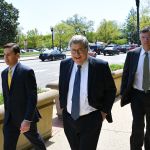


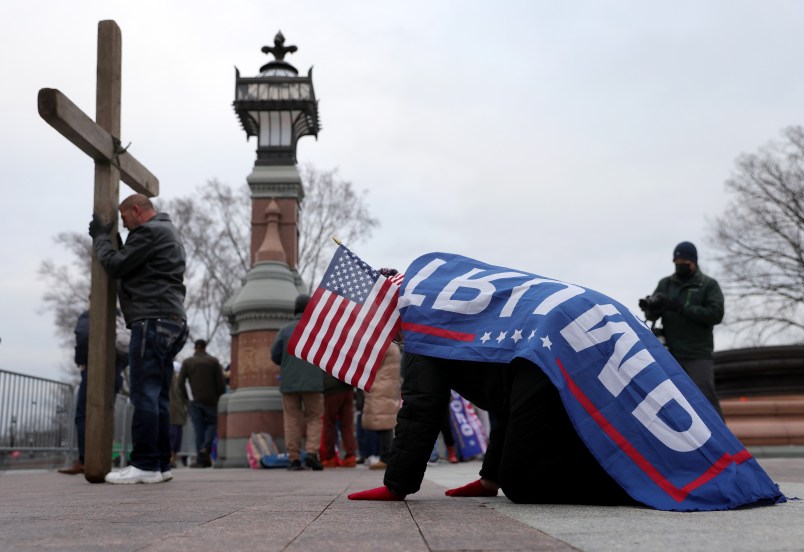
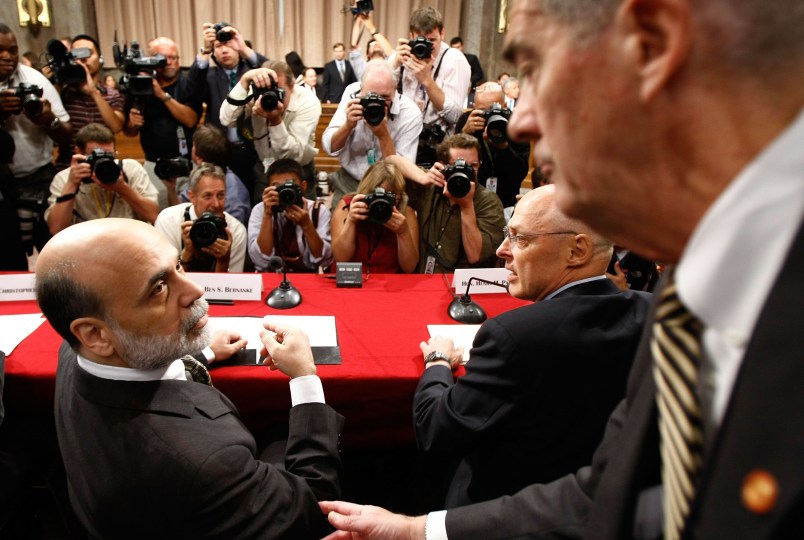
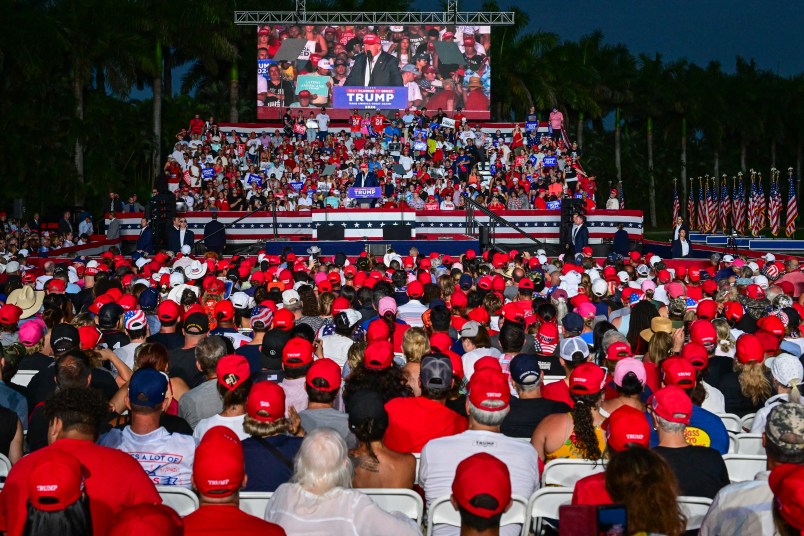
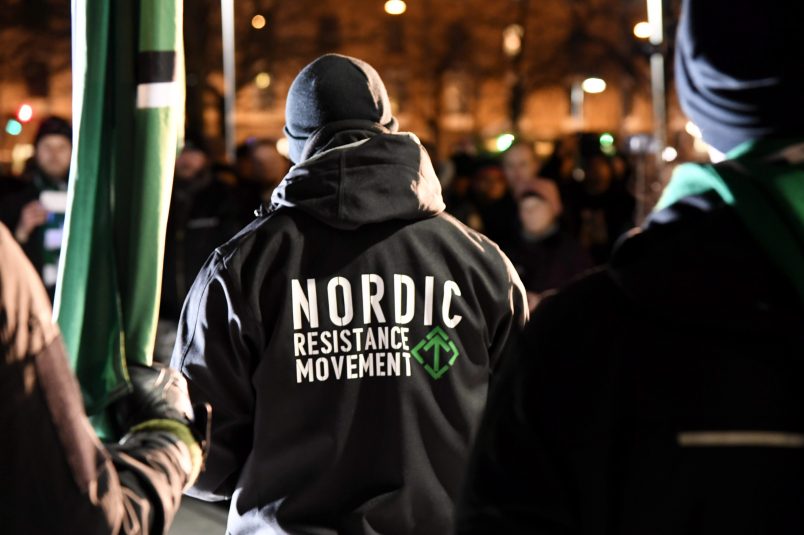
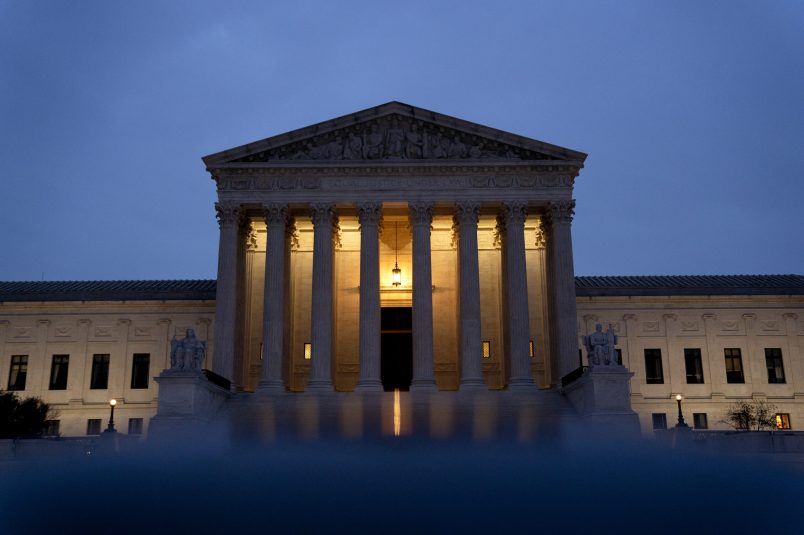
When didn’t an authoritarian political system not use mythology of past faith and glory to bolster their lie? It’s one of the strongest ways to link the misinformed. It’s symbols are propaganda devices used to stir up the rabble and gives a focal point. They are often repeated and morphed for the times.
We have met the Taliban and they are some of us.
They are giving all religions a bad name.
Christian Nationalism is . . .
. . . . .An ultimate oxymoron.
They have been wandering in the wilderness for 40 years now. With Pat Robertson and Christian Broadcast Network
Anybody who believes in the 21st century that the earth is 10,000 years old and that Adam and Eve had vegetarian T-Rexes for neighbors in the Garden of Eden 5,000 years ago can be convinced to believe literally anything. It’s not a hard push to also convince them that Italy conspired with Dominion to steal votes, and that Hillary Clinton wears a skin mask that Houma Abedin cut off a baby’s face.
What should be kept in mind is that the vast, vast majority of these Christian Nationalists come out of the Southern Baptist-derived evangelical churches that espouse a form of Biblical Literalism. There’s a component of extreme conservative Opus Dei Catholics working with them, but the shock troops are primarily Evangelicals. They’re not mainstream Lutherans, Presbyterians, Methodists, or Episcopalians, and obviously not Unitarians or Quakers.